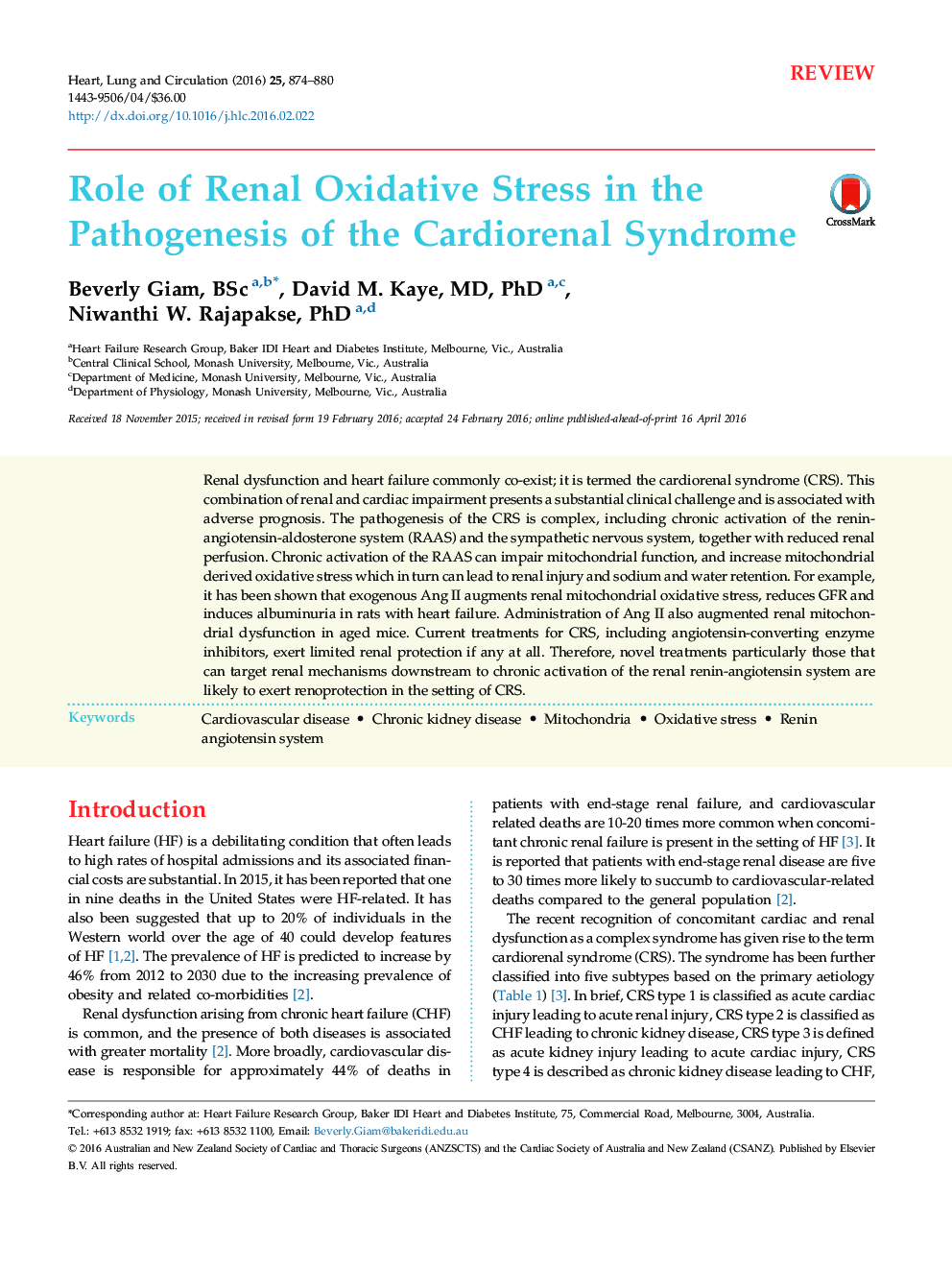| Article ID | Journal | Published Year | Pages | File Type |
|---|---|---|---|---|
| 2916637 | Heart, Lung and Circulation | 2016 | 7 Pages |
Renal dysfunction and heart failure commonly co-exist; it is termed the cardiorenal syndrome (CRS). This combination of renal and cardiac impairment presents a substantial clinical challenge and is associated with adverse prognosis. The pathogenesis of the CRS is complex, including chronic activation of the renin-angiotensin-aldosterone system (RAAS) and the sympathetic nervous system, together with reduced renal perfusion. Chronic activation of the RAAS can impair mitochondrial function, and increase mitochondrial derived oxidative stress which in turn can lead to renal injury and sodium and water retention. For example, it has been shown that exogenous Ang II augments renal mitochondrial oxidative stress, reduces GFR and induces albuminuria in rats with heart failure. Administration of Ang II also augmented renal mitochondrial dysfunction in aged mice. Current treatments for CRS, including angiotensin-converting enzyme inhibitors, exert limited renal protection if any at all. Therefore, novel treatments particularly those that can target renal mechanisms downstream to chronic activation of the renal renin-angiotensin system are likely to exert renoprotection in the setting of CRS.
